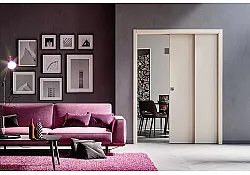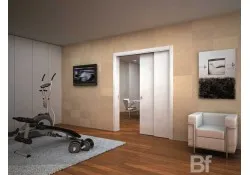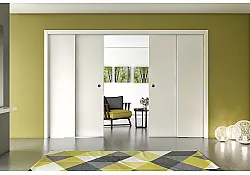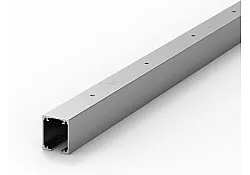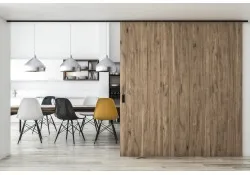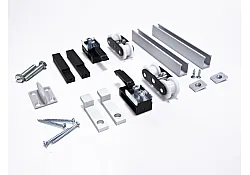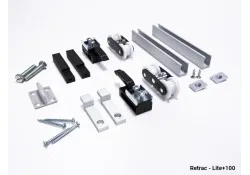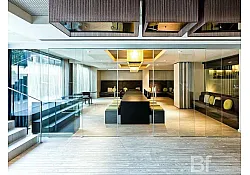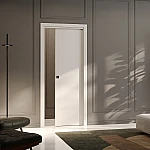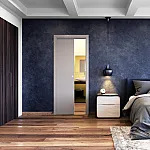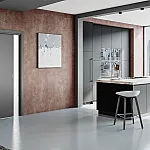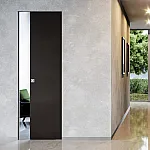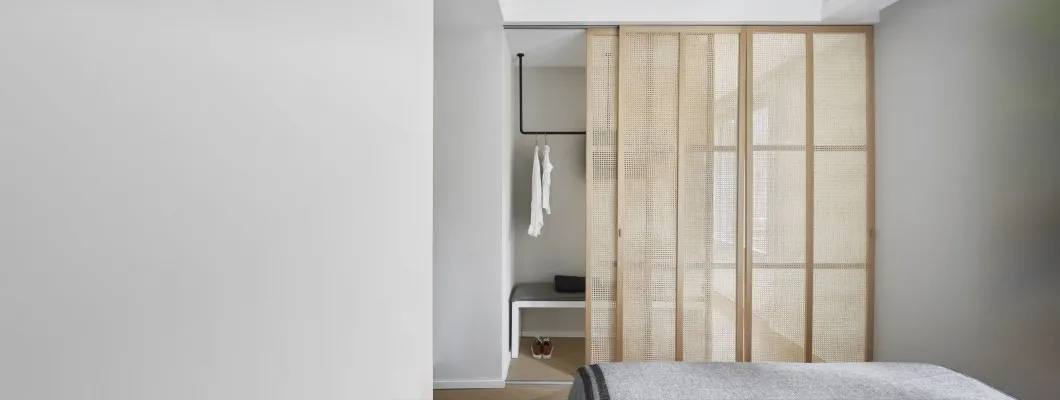
Nowadays we like to be as flexible as possible, also when it comes to the layout of our living or office space. A sliding wall offers this flexibility.
Unlike a sliding door, you can make a larger bridge with a sliding wall. This means that you can decide instantly to turn 1 room into 2 rooms or vice versa.
So-called origami apartments are therefore often made with sliding walls. This way, a room can get a completely different atmosphere and purpose in one go.
[Gifs SMALL origami apartment]

Make your own sliding wall
Making a sliding wall yourself does not have to be difficult. We will discuss the possibilities with you.
A sliding wall with separate door panels
The simplest way is to fix several rails next to each other to the ceiling and hang a panel on each rail. You can then slide the panels back and forth independently of each other. In a slid-open situation, one panel always remains perpendicular to the wall, behind which the others slide. It is also possible to opt for several door panels on a rail, but bear in mind that this reduces the space available when all panels are slid open. In addition, it is always wise to take into account the total weight for which the sliding door rail is available.
Product tip: The Lite100 sliding door track is very suitable for making a sliding wall! The rail is suitable for door panels with a maximum weight of 100 kg and comes in a length of up to 6 meters. A matching floor rail is also available for this product.
If you have opted for a rail system without a bottom rail, the panels at the bottom can move perpendicular to the rail, which may not benefit the lifespan of the trolleys in the rails.
We recommend using a floor rail for the most stable home-made sliding wall. This allows the panels to slide over a great length without losing stability.
If you want the door panels to stop at a specific place, you can place a door stop at that location. A softcloser can also be tailored to a specific location. Without the stops, the sliding wall panels can therefore move all the way from one side to the other.
Make your own sliding wall with telescopic door panels
Do you want the sliding wall panels not all to move independently of each other, but that they move telescopically with each other? Then you can use a coupling set as for telescopic operation. If you then move one wooden sliding door panel, the one behind it will be pulled along by it.
Product tip: Set Telescopic operation is suitable for making your own telescopic sliding walls Make your own sliding wall system in a fixed wall You can also combine panels with a fixed wall. You can do this, for example, with a built-in sliding wall system. Such a built-in system consists of a self-supporting cassette and suspension sets for the door panels. The built-in frame is then placed in a metal stud wall and the whole is finished with plasterboard. The end result is a sliding wall where both panels disappear into the wall when the sliding wall is opened. Product tip: We recommend the Staffetta system for installing a sliding wall in the wall. This built-in system comes in a version where both panels slide off the wall on one side (Staffetta Single), but a double system is also available, where a telescopic room-en-suite style is realized (Staffetta Double).
[banner Staffetta Single and Staffetta Double]
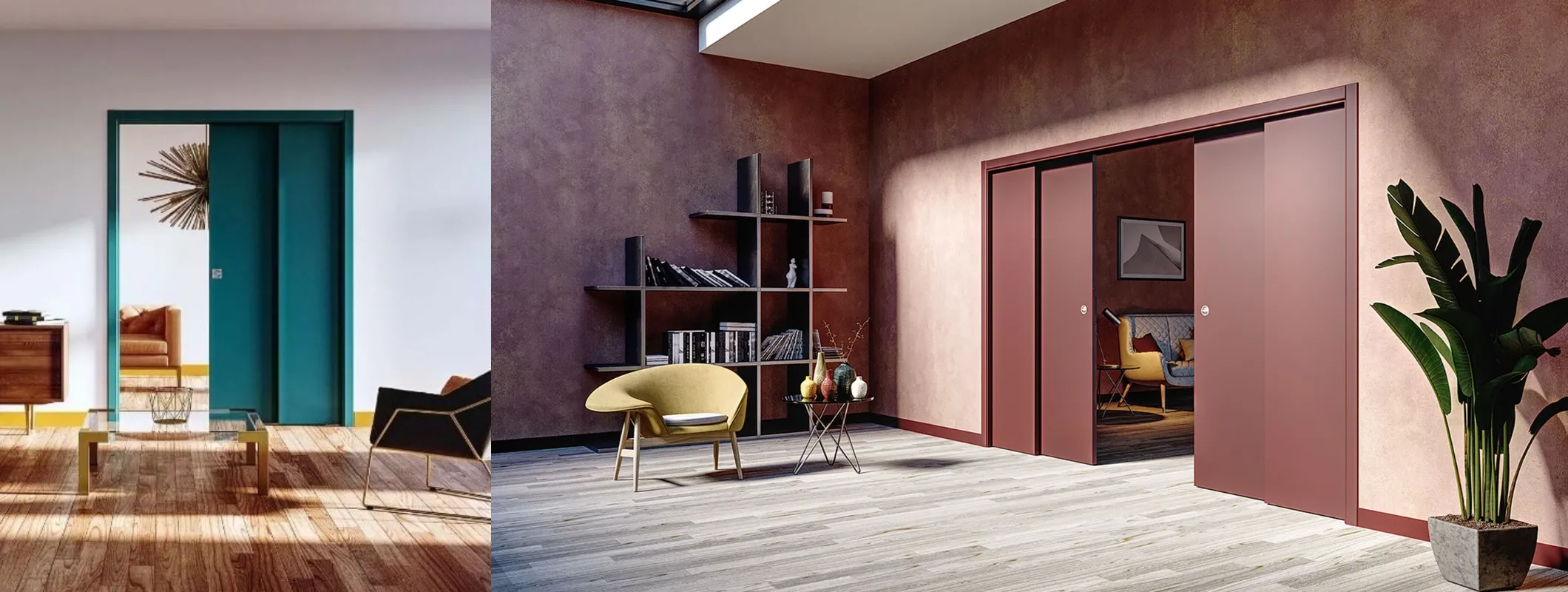
Create your own sliding wall with glass door panels If you prefer not to have a closed wall, you can also choose to make a sliding wall where the panels consist of glass instead of wood. There are specially designed sliding wall systems for glass. The advantage of this is that the doors open telescopically (also with the double version) and no floor rail is required.
[Open Gif Extendo Double Version]
Such a glass sliding wall can also be made in a corner on a shelf. This makes it extremely suitable for flexible office spaces. When a meeting is held, for example, the sliding walls can be closed and meetings can take place (safety glass blocks sound quite well). The glass gives the office a transparent and open appearance, but meetings can still be held in relative privacy.
[Image Extendo corner]
Product tip: For a sliding wall with glass door panels, we recommend the Extendo sliding door system for the best effect. This system can also be placed in a corner setup.
Make a flexible wall
As a last option, there is an option to create a completely closed wall where the panels are clicked together. When the wall is opened, there is a special 'parking space' where the panels are pushed together so that they take up as little space as possible.
[rail sketch from brochure Stockpanel]
Product tip: This solution often consists of customization. A system where this can be achieved is the Stockpanel. The great thing about this system is that no bottom rail is needed here!
Help for designing a sliding wall
Designing and making a sliding wall yourself can quickly become technically complex. Would you like help with the design and search for your own sliding wall? The BestFix product specialists are ready for you! We can be reached via info@bestfix.nl or via +31 (0)570 768 737.

